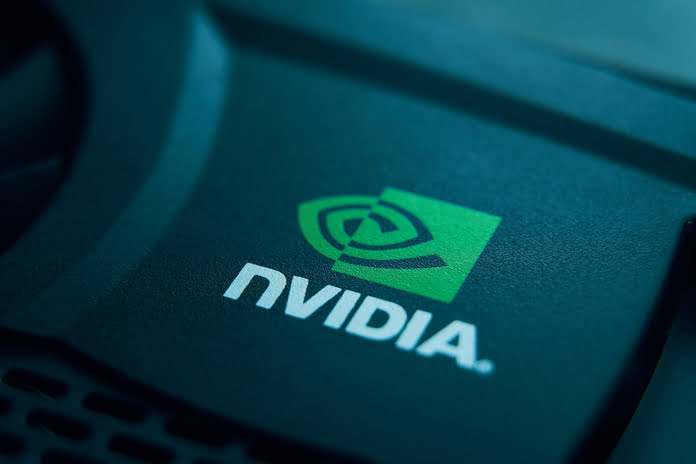resident Donald Trump’s decision to restrict Nvidia (NASDAQ:NVDA) from exporting its most advanced AI chips to China could signal a major shift in the Nvidia stock forecast. The policy, confirmed during a Nov. 2 interview, adds fresh uncertainty to the tech giant’s future growth trajectory—especially as it already faces slowing momentum and growing competition.
A Turning Point for Nvidia Stock
Trump announced the policy after declining to discuss the sale of Nvidia’s Blackwell AI chips during his October 30 meeting with Chinese President Xi Jinping. The move, supported by key advisers, aims to strengthen U.S. technological dominance but may come at a cost to Nvidia shareholders.
Once the undisputed leader in the AI chip boom, Nvidia (NASDAQ:NVDA) has seen its market capitalization skyrocket to $5 trillion, fueled by unprecedented demand from major hyperscalers like Alphabet (NASDAQ:GOOG), Microsoft (NASDAQ:MSFT), and Meta Platforms (NASDAQ:META). Its partnership with OpenAI and explosive revenue growth—tripling since 2023 and surpassing $46 billion in Q2 fiscal 2025—have made NVDA the market’s crown jewel.
Yet, the Nvidia stock forecast is starting to look less bullish. Despite a 48% year-to-date gain, NVDA shares have advanced only 10.7% in the past three months. With a forward P/E ratio near 48, the stock already prices in a near-perfect growth scenario, leaving little room for policy setbacks or slowing demand.
Trump’s Export Ban Adds a New Layer of Risk
During his CBS 60 Minutes interview, Trump clarified his position: “We will let [China] deal with Nvidia but not in terms of the most advanced [chips]. The most advanced, we will not let anybody have them other than the United States.”
While Nvidia had already stopped selling its high-end AI accelerators to China due to existing export controls, investors had been hopeful for a policy reversal. Trump’s announcement extinguishes those hopes—likely cooling investor enthusiasm for the stock.
Indeed, early signs of that cooling are visible. NVDA dropped 5.7% in the five trading days ending Nov. 5. With top Trump administration figures such as Secretary of State Marco Rubio, Commerce Secretary Howard Lutnick, and U.S. Trade Representative Jamieson Greer endorsing the move, a policy reversal seems improbable.
This stance could weigh on the Nvidia stock forecast for the months ahead, as the company loses access to a lucrative Chinese market that once accounted for a significant slice of its AI chip demand.
Mounting Competition Threatens Nvidia’s Dominance
Beyond geopolitics, Nvidia faces intensifying competition. Advanced Micro Devices (NASDAQ:AMD) plans to launch its MI450 GPU series in 2026, expected to rival Nvidia’s top-tier AI chips. In a major blow to NVDA, OpenAI has already signed a deal to use six gigawatts of AMD chips over several years, potentially generating $100 billion in revenue for AMD.
Meanwhile, Broadcom (NASDAQ:AVGO) has made major inroads into AI semiconductors, with more than half its chip revenue now tied to AI applications. AVGO also unveiled a $10 billion custom AI chip partnership with OpenAI set to launch in 2026. Additionally, cloud giants like Amazon (NASDAQ:AMZN) and Meta (NASDAQ:META) are investing heavily in their own AI chip designs—further threatening Nvidia’s market share.
Investor Outlook: Time to Take Profits?
While Nvidia remains a powerhouse with an unmatched ecosystem and robust revenue growth, several red flags are emerging. The combination of Trump’s export restrictions, heightened competition, and lofty valuations could make the Nvidia stock forecast less appealing for short- to medium-term investors.
Add to that Wall Street’s increasing skepticism about AI market valuations, and it becomes clear that NVDA’s risk-reward profile is no longer as attractive as it was earlier in the AI boom.
Bottom Line
Nvidia’s leadership in the AI chip space is undisputed—but leadership doesn’t guarantee immunity from policy shocks or market competition. As the geopolitical climate tightens and rivals like AMD and Broadcom ramp up their offerings, investors may want to tread carefully.
For now, the Nvidia stock forecast suggests caution. Locking in some profits and reallocating to stocks with stronger near-term catalysts might be the prudent move.
Featured Image – Megapixl









